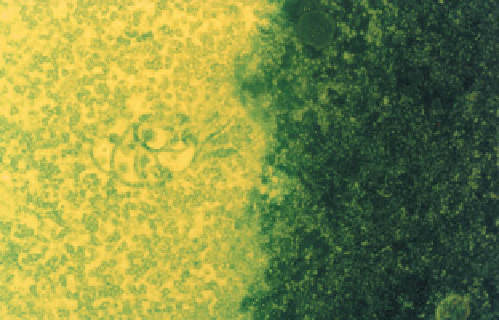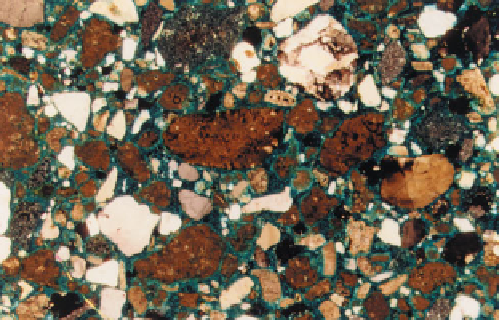Geoscience Reference
In-Depth Information
this can affect the response of the rock in service to its
environment should such rock be used to make aggregates.
Degree of weathering may be assessed petrographically
using the classification shown in
Table 14
.
Other undesirable aggregate constituents include:
Porous aggregate
- these increase the water demand of
the mix when used in concrete, which has a detrimental
effect on concrete strength and durability. Highly
microporous rocks may be frost susceptible. Flints often
have a highly microporous white cortex and may cause
'pop-outs' on concrete surfaces when exposed to freeze-
thaw processes (
137
). Chalk is distinctive limestone that
outcrops in western Europe (with chalk-like rock found in
other locations) and it occurs as a constituent in sand and
gravel deposits. Chalk is typically weak, highly
microporous, and is considered to be an unsuitable
aggregate constituent in all but trace amounts (
138
).
Table 14
Classification of weathered rock for engineering purposes (from Anon, 1995; a similar table
appears in BS 5930:1999a)
Grade
Classifier
Typical characteristics
I
Fresh
• Unchanged from the original state
II
Slightly weathered
• Slight discolouration, slight weakening
III
Moderately weathered
• Considerably weakened, penetrative discolouration
• Large pieces cannot be broken by hand
IV
Highly weathered
• Large pieces can be broken by hand
• Does not readily disaggregate (slake) when a dry sample is
immersed in water
V
Completely weathered
• Considerably weakened
• Slakes
• Original texture is apparent
VI
Residual soil
• Soil derived by in situweathering but retaining none of the
original texture or fabric
137
138
137
Flint aggregate particle showing the frost-
susceptible highly microporous cortex (left, yellow)
and the nonporous core (right, dark green); UV, ×150.
138
Concrete fine aggregate (southeast England)
contaminated with chalk (brown); XPT, ×35.






